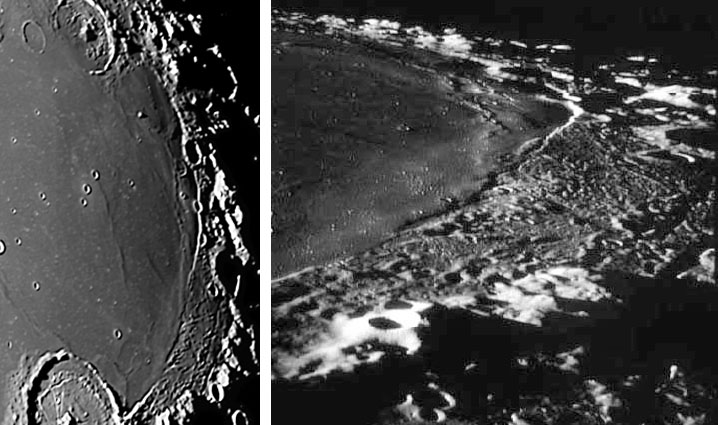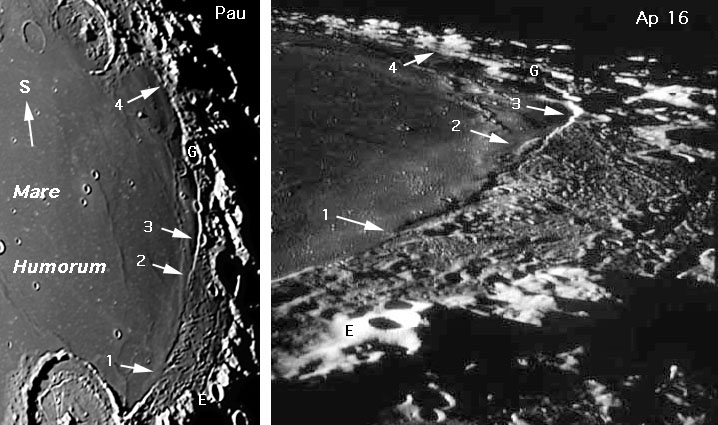Difference between revisions of "August 20, 2004"
(Created page with "__NOTOC__ =Humor More My Fault= ---- ===COMMENTS?=== Click on this icon image:PostIcon.jpg at the upper right to post a comment.") |
|||
| (18 intermediate revisions by the same user not shown) | |||
| Line 1: | Line 1: | ||
__NOTOC__ | __NOTOC__ | ||
=Humor More My Fault= | =Humor More My Fault= | ||
| − | + | <!-- Start of content --> | |
| − | + | <br> | |
| − | + | <table width="85%" border="0" align="center" cellpadding="6" cellspacing="2"> | |
| − | ---- | + | <tr> |
| − | === | + | <td colspan="2" valign="top"><div align="center"> |
| − | + | {{HoverImage|LPOD-2004-08-20.jpeg|LPOD-2004-08-20b.jpeg}} | |
| + | </div></td> | ||
| + | </tr> | ||
| + | </table> | ||
| + | <table width="80%" border="0" align="center" cellpadding="8"> | ||
| + | <tr> | ||
| + | <td><div align="center" class="main_sm"> | ||
| + | Image Credit: [http://www.lpi.usra.edu/research/apollo/catalog/70mm/mission/?16 Apollo 16 AS 16-120-19324 ] and [mailto:kcpaulhk@yahoo.com.hk KC Pau] | ||
| + | </div></td> | ||
| + | </tr> | ||
| + | </table> | ||
| + | <br> | ||
| + | <table class="story" border="0" bgcolor="#FFFFFF" width="90%" cellpadding="10" align="center"><tr><td> | ||
| + | <p class="story" align="center"><b>Humor More My Fault</b></p> | ||
| + | <p class="story" align="left"> | ||
| + | Geologists love to find boundaries because they demonstrate the relation between different units. At a boundary you can usually identify two different rock types or geologic processes or ages. Some boundaries feather into each other and others are sharp and distinct. This boundary at the western edge of [[February_18,_2004|Mare Humorum]] looks like you could stand with one foot on each unit. The right image is an Apollo 16 oblique view looking south along the Liebig Scarp, and the left is a mosaic by KC Pau to provide context. Mare Humorum lavas appear to lap up onto (and thus are younger than) the rubbly shore between points 1 and 2 (see mouseover), but south of 2, the Liebig Scarp stopped the lava. The shadow of the flow front between 1 and 2 suggests a considerable flow thickness - much more than the few tens of meters where flow fronts have been measured in [[July_19,_2004|Imbrium]] and elsewhere. The rille-crossed and hummocky terrain to the right of the mare is perhaps similar to the Apennine Bench near Imbrium - a residual bench of the basin floor. The elongate ridge at 2 may be a high sliver of the bench that was isolated by the fault. The Apollo image provides a fine, near-profile view of the crater Liebig G, showing the relatively steep outer rim - I wouldn't want to climb that in a spacesuit!</p> | ||
| + | <blockquote> | ||
| + | <p align="right"> — [mailto:tychocrater@yahoo.com Chuck Wood ]</p> | ||
| + | </blockquote> | ||
| + | <p><b>Technical Details:</b><br> | ||
| + | Left image: Nov 5, 2003, 10" f/6 Newtonian with 2X barlow and Philips Toucam Pro; a mosaic of 4 images.<br> | ||
| + | Right image: Modified handheld Hasselblad camera in billion dollar orbiting imaging platform (command module)</p> | ||
| + | <p><b>Related Links: </b><br> | ||
| + | [http://www.lpi.usra.edu/research/lunar_orbiter/images/img/iv_149_h1.jpg Lunar Orbiter IV View] </p> | ||
| + | <p><b>Yesterday's LPOD:</b> [[August 19, 2004|A New Dome?]] </p> | ||
| + | <p><b>Tomorrow's LPOD:</b> [[August 21, 2004|Vaporum: Crater or Basin?]] </p> | ||
| + | </tr> | ||
| + | </table> | ||
| + | <br> | ||
| + | <table width="100%" border="0" cellspacing="2" cellpadding="4"> | ||
| + | <tr> | ||
| + | <td><hr></td> | ||
| + | </tr> | ||
| + | <tr> | ||
| + | <td><p align="center" class="main_titles"><b>Author & Editor:</b><br> | ||
| + | [mailto:tychocrater@yahoo.com Charles A. Wood]</p> | ||
| + | <!-- Cleanup of credits --> | ||
| + | <!-- Cleanup of credits --> | ||
| + | <!-- Cleanup of credits --> | ||
| + | <!-- Cleanup of credits --> | ||
| + | <!-- Cleanup of credits --> | ||
| + | <!-- Cleanup of credits --> | ||
| + | <!-- Cleanup of credits --> | ||
| + | <!-- Cleanup of credits --> | ||
| + | <!-- Cleanup of credits --> | ||
| + | {{wiki/ArticleFooter}} | ||
Latest revision as of 13:27, 15 March 2015
Humor More My Fault
Image Credit: Apollo 16 AS 16-120-19324 and KC Pau |
|
Humor More My Fault Geologists love to find boundaries because they demonstrate the relation between different units. At a boundary you can usually identify two different rock types or geologic processes or ages. Some boundaries feather into each other and others are sharp and distinct. This boundary at the western edge of Mare Humorum looks like you could stand with one foot on each unit. The right image is an Apollo 16 oblique view looking south along the Liebig Scarp, and the left is a mosaic by KC Pau to provide context. Mare Humorum lavas appear to lap up onto (and thus are younger than) the rubbly shore between points 1 and 2 (see mouseover), but south of 2, the Liebig Scarp stopped the lava. The shadow of the flow front between 1 and 2 suggests a considerable flow thickness - much more than the few tens of meters where flow fronts have been measured in Imbrium and elsewhere. The rille-crossed and hummocky terrain to the right of the mare is perhaps similar to the Apennine Bench near Imbrium - a residual bench of the basin floor. The elongate ridge at 2 may be a high sliver of the bench that was isolated by the fault. The Apollo image provides a fine, near-profile view of the crater Liebig G, showing the relatively steep outer rim - I wouldn't want to climb that in a spacesuit! Technical Details: Related Links: Yesterday's LPOD: A New Dome? Tomorrow's LPOD: Vaporum: Crater or Basin? |
Author & Editor: COMMENTS?Register, Log in, and join in the comments.
|





